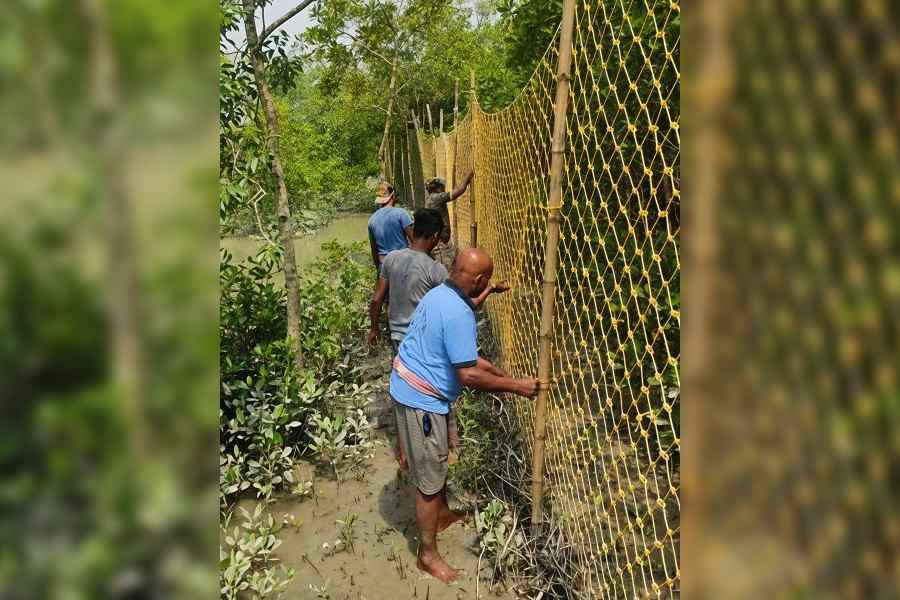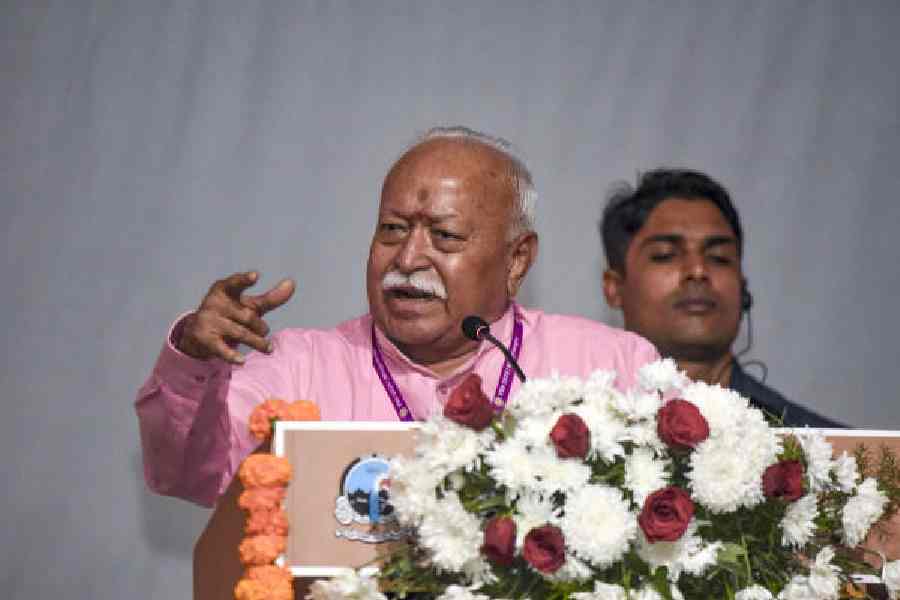 |
| Arjun Munda checks out a shirt at the Jharcraft store on Ranchi’s Main Road on Sunday. (Hardeep Singh) |
If states can have IT, food and biotech parks as one-stop hubs to reel in big-ticket investors from across India and abroad, why not silk parks in Jharkhand?
Jharcraft, India’s largest producer of organic tussar silk, which was mulling upon this for some time, asked this query to the state industries department this August.
Jharcraft, which functions under the state industries department, has mooted a mega plan of four silk parks costing Rs 17 crore each, public-private partnerships most welcome. It hopes the chief minister Arjun Munda will say yes in a couple of months. If it happens, the state will witness high waves of silken enterprise — sericulture as well as centralised silk production.
Jharcraft has the earned the right to dream big through sheer performance. It is the only certified organic tussar silk producer in India to be recognised by Central Silk Board. The numbers are enough to make any silk industry insider giddy.
As Munda is also likely to know, Jharcraft produced 1,025 metric tonnes of organic tussar silk in 2011-12, a year in which the country’s total production was 1,400 metric tonnes. The corporation already employs over 30,000 individual weavers only for sericulture.
Jharcraft managing director Dhirendra Kumar said they had big hopes from the project.
“The parks will ensure quality silks to cater to high-end market in India and abroad,” he said, adding they had met or exceeded targets every year since their inception in 2006.
“For instance, our target in 2011-12 was 900 metric tonnes and we ended up producing 1,025 metric tonnes. With a silk park, production will go north while costs will be slashed. We are confident that the chief minister will give us his nod soon,” Kumar said.
While the wait continues for the nod, the concept of the silk parks is being fine-tuned.
The idea is to have all sericulture activities at one place — right from the production of cocoons to rearing and spinning of the yarn, design and development, dyeing, finishing, as well as research and development, marketing — to share the producers and buyers the unbeatable edge in both cost and quality.
Land acquisition — the main bump in many projects nowadays — should not be a hurdle.
Two five-acre plots each in Sundernagar in Godda and near Borda village in Kharsawan have been identified. The other two in Giridih and Silli, Ranchi, are in the process. The proposed investment of Rs 17 crore in each park won’t be a one-shot affair, rather it will be made in phases. “In fact, entrepreneurs from Maharashtra have already shown interest in investing in the proposed silk parks, which is a good sign,” said Kumar.
The units are expected to employ about 5,000 people each. They will also have quality control units, sales and exports division. As there is a domestic market for the organic tussar, the stress is more on wooing overseas buyers. The centralised units have a great scope of boosting rural employment. In an integrated set-up, while production of silks will increase, marketing will also be sharper as both teams would work in sync with each other.
When a six-year-old unit in Jharkhand manages to sell silk to China, nothing is impossible.
Will silk parks shore up rural economy in the state? Tell ttkhand@abpmail.com











